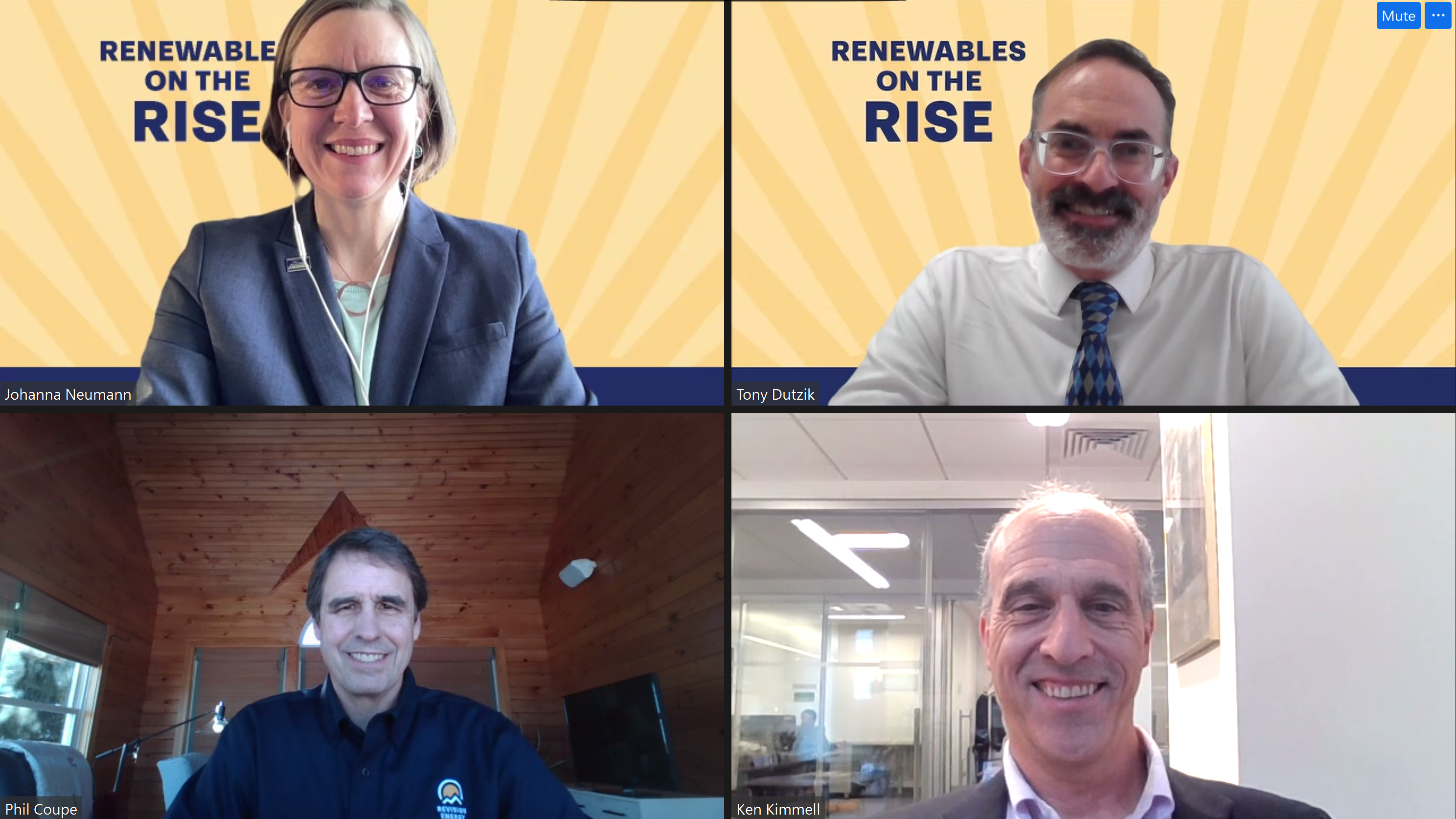
The Clean energy home series (Part 4): What else is there?
The final edition in a series on how to electrify your home and transition to appliances that can run on renewable energy

Our clean energy intern Adelina Sederman explores more ways to introduce electric appliances and amenities in your home and shift away from fossil fuels in your everyday life. Check out Adelina’s other blogs in this series on heat pumps for heating and cooling, heat pump water heaters, and induction stoves for cooking.
Most of the energy we use in our homes goes toward space heating and cooling. Water heating is next, and lighting/appliances follow. As America works to replace dirty energy sources with clean ones, one challenge that we face is that the systems that provide vital home necessities like space and water heating often run on polluting oil and gas. I’ve written about how to repower those functions with clean energy in previous blogs in this series. You can read about the technologies for space heating, water heating and electric cooking in previous posts in this series.
In this blog I explore the many other not-so-obvious elements to our daily life that also use energy and often run on polluting energy sources. Most of these domestic amenities have electric alternatives. From electric washers and dryers to grills and fireplaces, all kinds of cutting-edge and efficient technologies present the opportunity to transform our fossil fuel-driven homes into clean-energy homes.
Clean Energy Washing & Drying
Many clothes dryers run on fossil fuels. To conserve the most energy, you can hang-dry your clothes.

Alternatively, you can transition your home appliance over to a dryer powered by electricity. Electric replacement options include standard electric dryers and heat pump dryers, both of which are much more efficient and better for indoor air quality than fossil fuel-powered devices and, in the case of heat pump dryers, don’t even require a vent outside the building.
Hot tubs & heated pools
Hot tubs and heated pools are another big energy user that require regulated water temperatures. They are generally heated by gas or oil, but the market for renewable heating is growing.
Electric and heat pump heaters exist for pools and hot tubs, and these heaters are easy to install and are half the size of fossil fuel-powered heaters. Even in hot and humid climates like Florida, pools and especially hot tubs need heating systems to be comfortable.
Grills & Smokers
My favorite part about cooking food is the tantalizing smell that fills our kitchens and porches when we grill. When I lived off campus with some friends last fall, we explored a lot of Southern cuisine, including barbeque.
Electric grills offer an alternative to cooking with gas or charcoal that allow you to prepare tantalizing food for your family and loved ones to enjoy, but without the pollution.

Gas and charcoal grills produce carcinogens that pollute the air and can get into the food you cook. In contrast, electric grills are heated by electricity, a fuel that, if sourced from renewable energy like wind and solar, generates neither fumes nor smoke.
Beyond the environmental and health benefits of electric grilling, there are conveniences too. For example, electric grills can be used safely indoors. You can even make slow-smoked pulled pork on an electric grill, as aluminum foil is perfectly safe to use on electric grills.
Wood stoves & fireplaces
Another popular feature that pollutes homes is an indoor fireplace. As much as I love sitting in front of my Gramma’s cozy fireplace in the winter, burning wood comes with health risks due to the combustion reaction that creates the risk of inflammation and clotting in the heart and lungs.
With an efficient Heating/Ventilation and Air Conditioning system, especially one powered electrically by a heat pump, the need for fireplaces to heat homes has become obsolete. For people like me who really love fireplaces, electric ones provide a reasonably inexpensive option while still giving off the warmth that a gas or traditional fireplace would.
Collectively, we will make the biggest impact to move towards a future powered by 100% renewable energy if we can reduce energy waste, create more clean energy, and set up the energy-using technology in our lives to run off that clean energy. To address the worst impacts of climate change and maximize the benefits of clean energy, it’s time for each of us to consider steps we will take to electrify the appliances in our homes and put an end to the pollution that dirty energy causes.

Clean Energy Home Toolkit
Clean energy homes are our future -- support the Zero Emission Homes Act
You can add your voice to the effort to make every home in America a clean energy home by supporting the Zero Emissions Home Act. This legislation will reduce the overall cost of purchasing and installing electric appliances. Send a message to your U.S. senators today to show your support for clean, electric homes.
Topics
Authors
Johanna Neumann
Senior Director, Campaign for 100% Renewable Energy, Environment America Research & Policy Center
Johanna directs strategy and staff for Environment America's energy campaigns at the local, state and national level. In her prior positions, she led the campaign to ban smoking in all Maryland workplaces, helped stop the construction of a new nuclear reactor on the shores of the Chesapeake Bay and helped build the support necessary to pass the EmPOWER Maryland Act, which set a goal of reducing the state’s per capita electricity use by 15 percent. She also currently serves on the board of Community Action Works. Johanna lives in Amherst, Massachusetts, with her family, where she enjoys growing dahlias, biking and the occasional game of goaltimate.
Adelina Sederman
Clean energy intern
Find Out More

Installing Rooftop Solar Panels in Pennsylvania

Key takeaways from Renewables on the Rise: Success Stories

Navigating Inflation Reduction Act Benefits as a Non-Profit



